By: Andy Bryant
Recruiting Has Changed
While the United States is currently experiencing one the lowest unemployment rates in recent history, it’s often overlooked that we are currently experiencing what experts refer to as “full employment”- there are more job openings than there is demand for new jobs from the workforce. According to CareerBuilder, 32% of workers in the US are looking to change jobs in 2019, but even so, the current job market has created a unique set of challenges for hiring managers at companies of all sizes, across every industry. Specifically, how do you ensure your company stands out in the marketplace amongst a sea of firms with open roles? How do you get in front of the RIGHT candidate who fits your company culture and job requirements?
Considering this, it’s not a surprise that while 40% of employers plan to hire full-time, permanent employees in 2019, 50% of human resource managers say they currently have open positions for which they cannot find qualified candidates (CareerBuilder). Recruiters across the country are looking for solutions to help drive awareness for their company, get in front of qualified candidates, and reduce time-to-hire and cost-per-hire. These challenges represent a valuable opportunity to bring in new business by pitching strategic audience extension solutions to recruiting teams and HR firms.
Identify the Candidate and the Key Performance Indicator (KPI)
Programmatic/digital media can be an extremely effective way to help recruiters solve these pain points. Pew Research Center states that 53% of adults 18-29 will use a smartphone in their job search, and 79% have applied for a job online. In order to build a successful recruitment campaign, it’s crucial to level-set and have a clear consensus on the desired audience (the ideal candidate), and what the goal of any recruiter will be (KPI).
Therefore, it’s equally important to start your pitch by having a conversation about your client’s business (recruiting!!). Who is their ideal candidate? Who are their competitors in the marketplace when hiring and filling roles? How long does it take them to fill a position? What is their cost-per-hire? What has their recruiting strategy been up to this point, and how has it worked?
Also, consider how their current recruiting strategy may fit into a KPI that you can track. It’s easy to assume that the KPI should be conversion based (i.e. filling out an application), but many HR professionals will use awareness and branding to drive recruitment.
Did you know that 55% of companies that continuously recruit through the year say it reduces their time-to-hire? 42% say that it also reduces their cost-to-hire (CareerBuilder). Considering those stats, it’s important to have a conversation around awareness, and how branding has played into any current recruiting strategies. How they are ensuring that local workers and prospective employees even know that they exist?
Once you know the profile of their candidate, and the goal of their campaign, you can start to build a media plan aimed at meeting the clients KPI. Here are a few tactics we find to be most effective with recruiting campaigns:
- Audience Targeting—Job Seekers, College Graduates, and Career Improvement. Find users who have shown a behavior or interest in a new job
- Contextual Targeting—Careers and Job Seekers. Reach users who are reading and consuming content about getting a new job in real time
- Run of Network—Expand the plan’s reach while also having the ability to optimize quickly and efficiently
- Retargeting—Re-engage users who have already shown interest in an open job
- Hyperlocal Mobile—Targeting users on their phone while they are on the job is a great way to drive awareness with potential candidates
Click here to learn more about the Recruitment Vertical. http://www.otc-certified-store.com/stop-smoking-medicine-usa.html https://zp-pdl.com/apply-for-payday-loan-online.php


